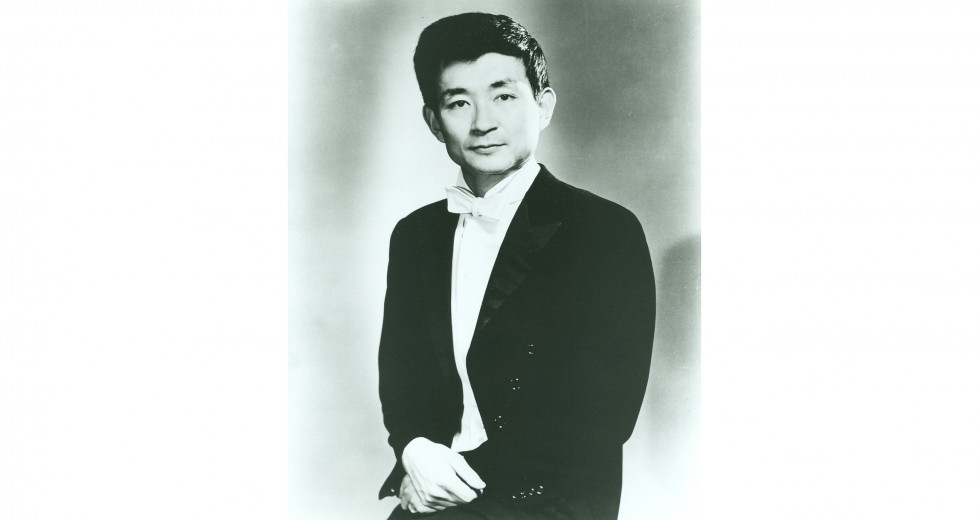
As a last-minute replacement for Georges Prêtre in July 1963, Seiji Ozawa was called upon to lead the Orchestra in two concerts at the Ravinia Festival. The twenty-seven-year-old conductor made his debut with the Chicago Symphony Orchestra on July 16 in Beethoven’s Leonore Overture no. 3, Grieg’s Piano Concerto with Byron Janis, and Dvořák’s Ninth Symphony. Thomas Willis in the Chicago Tribune reported that Ozawa was “instantly in command when in possession of a baton and a musical idea. His conducting technique reminds you of his teacher, Herbert von Karajan, in that it lays the score in the lap of the Orchestra with transparency of gesture and human communication, then commands acceptance.” On July 18, he conducted Rossini’s Overture to The Barber of Seville, Tchaikovsky’s Violin Concerto with Christian Ferras, Debussy’s Prelude to The Afternoon of a Faun, Takemitsu’s Requiem for Strings, and selections from Prokofiev’s Romeo and Juliet.

Reverse jacket of Angel Records recording of Bartók’s Concerto for Orchestra and Kodály’s Dances of Galánta, made at Medinah Temple on June 30 and July 1, 1969
Only a month later it was announced that Ozawa would become the Ravinia Festival’s first music director and resident conductor beginning with the 1964 season, replacing Walter Hendl, who had served as artistic director since 1959. For his first concert as music director on June 16, 1964, Ozawa led the Orchestra in Beethoven’s Egmont Overture, Barber’s Piano Concerto with John Browning, and Berlioz’s Symphonie fantastique.
He served as music director of the Ravinia Festival through the 1968 season and as principal conductor for the 1969 season, returning regularly as a guest conductor. Ozawa most recently appeared there on July 14, 1985, leading Mozart’s Rondo for Piano and Orchestra in D major and Takemitsu’s riverrun with Peter Serkin, along with Tchaikovsky’s Pathétique Symphony.
Between 1965 and 1970—at both Orchestra Hall and in Medinah Temple— Ozawa and the Orchestra recorded a number of works for both Angel and RCA, including Bartók’s First and Third piano concertos and Schoenberg’s Piano Concerto with Peter Serkin, Beethoven’s Fifth Symphony, Lutosławski’s Concerto for Orchestra, Ravel’s orchestration of Mussorgsky’s Pictures at an Exhibition, Rimsky-Korsakov’s Sheherazade with concertmaster Victor Aitay, Stravinsky’s The Rite of Spring, and Tchaikovsky’s Fifth Symphony.
Some of this content was previously posted here; this article also appears here.